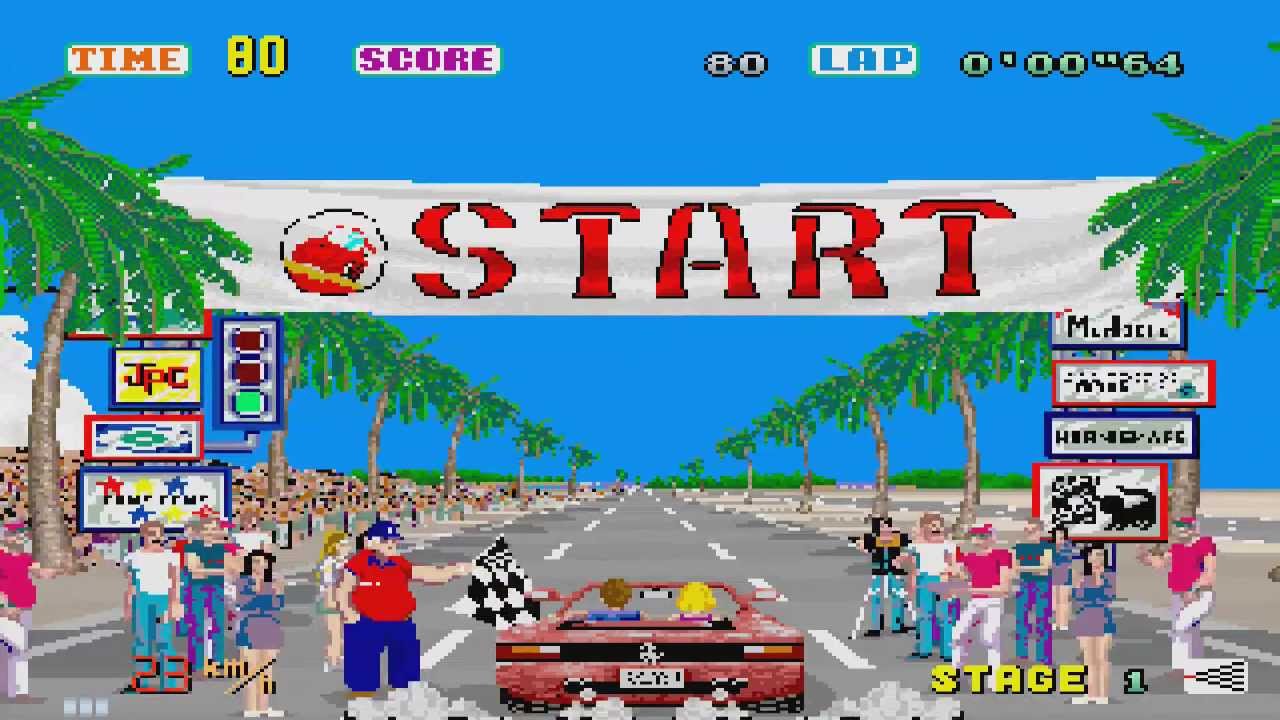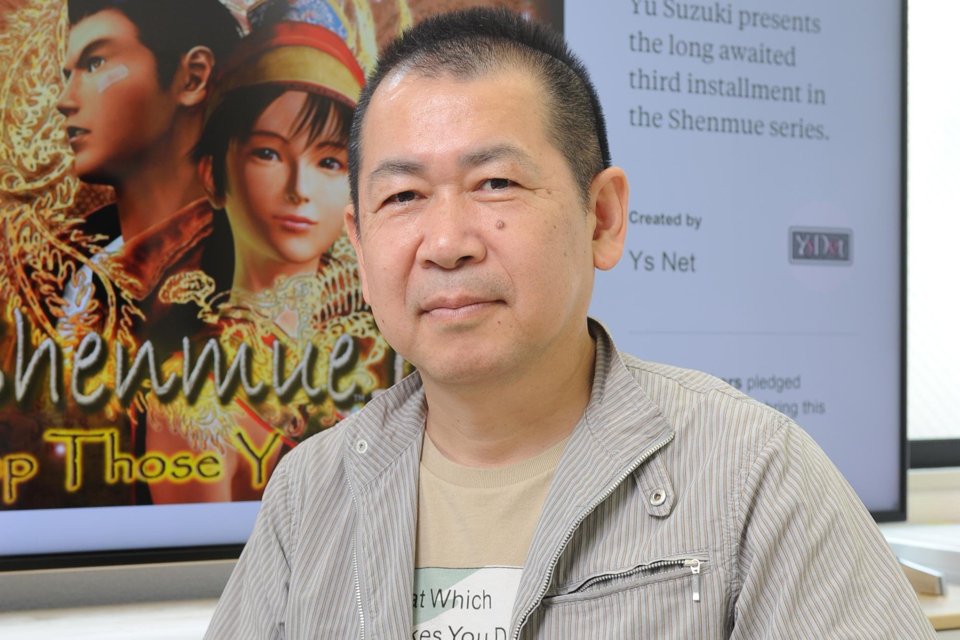Yu Suzuki: Arcade Hero
Sega's very own Midas
Mar 23
Gather round one and all as we tell the tale of a true arcade visionary. A man of storied legend in the wild and wonderful gaming space that was the final few decades of the 20th century.

As the 80’s rumbled into town a company named Sega started making real Kanagawa sized waves in the land of blockbuster gaming. Momentum was growing and Sega was becoming a household name. A name synonymous with ground breaking titles that rocked the arcade. Nintendo may have drawn first blood in the home console market, but at the arcade, Sega was the undisputed king. The crown had been hard earned, buoyed by the success of titles that would become classics in the annals of history, and these titles all had one thing in common; They were all of them headed up by the same man.
Indeed it wouldn’t be controversial to say that Sega’s success in the arcade scene can be attributed to that man, and that mans name, is Yu Suzuki.
Suzuki, the now fabled game designer and producer joined Sega in 1983 and quickly became a driving force behind the company's arcade successes. His first game for Sega, was Hang-On, a motorcycle racing game that pioneered the use of “super scaling”. People lost their minds. Here was a game that looked like nothing before it, unmatched in its ability to provide the players with high octane, white knuckle thrills. Naturally, it became a huge hit in arcades around the world.
But Suzuki wasn’t done yet. He followed up Hang-On’s success with Space Harrier, a 3D shooter that further utilised Sega's "Super Scaler" technology, and in doing so created a stunning sense of depth and movement few games if any could match. The “Fantasy Zone” drew people in and didn’t let go until the screen asked a familiar question of its user. Continue? Most did, many many times over. Space Harrier became another huge hit for Sega, and it cemented Suzuki's status as a top game designer.
But Suzuki's most famous game was yet to come. In 1986, he created Out Run.
Out Run featured stunning graphics, multiple paths to choose from, and a soundtrack that was so far ahead of its time, we’re still playing catch up with it today. Simply put, there was nothing else like it. Suzuki had created that elusive thing all creators strive for but very few manage to succeed in making: A bonafide masterpiece. The game's realistic graphics and intuitive controls made it an instant hit, and it further established Suzuki as a master of arcade game design. Suzuki went on to develop other arcade hits such as After Burner, Power Drift and Virtue Fighter to name a few, cementing his reputation as one of the most innovative game designers of his time.

As the 90s rolled forward, Suzuki turned his attention to home consoles, developing a series of critically acclaimed games for the Sega Saturn and Dreamcast. It was during this period that he began his most personal and ambitious project: Shenmue. If there’s one word we can use to describe Shenmue, ambitious fits the bill pretty damn well.
A sprawling open-world game that took place in 1980s Japan, it was (but of course) a groundbreaking game, featuring a living, breathing world that players could explore and interact with. The game's attention to detail and innovative gameplay had it hailed as an instant classic, indeed it’s still revered by gamers to this very day, but all that innovation, all that wild ambition had come at a huge cost. In the short term, Shenmue lost Sega money. The games budget had spiralled, and its sales while healthy, didn’t net the company jackpot levels of income as had been hoped for - the pace too slow, the level of detail dubbed too “mundane” to allow it to appeal to more casual gaming audiences. Suzuki had turned the most expensive game of all time into the gaming equivalent of an art film. Worse still, it was a commercial failure when Sega needed a win more than ever. The times had changed, and Sega were no longer riding the heady highs their arcade mega hits had provided. What's more, Sony’s entry into the home console market had provided further complication still. Suzuki would go on to complete the development of Shenmue 2 albeit on a much more “reasonable” budget than the first game, but history would sadly repeat itself, and while hailed as a success from a critical stand point, commercially the game underperformed to an even higher degree than the first.
Suzuki would go on to direct and produce further games, notably Virtua Fighter 4 and Outrun 2, and while these games achieved strong commercial success, they simply couldn’t match the mega-hit status his earlier titles had enjoyed. Even the brightest stars eventually burn a little less brightly.
Some people catch lightning in a bottle once and consider it a job well done, Suzuki did it time and time again during his hot streak, and we, the players, were all the better for it.

Yu Suzuki's impact on gaming cannot be overstated. His arcade hits revolutionised the industry, introducing new gameplay concepts and technology that would pave the way for future games. His attention to detail and dedication to innovation set him apart from his peers, and his influence can be seen in the work of countless game designers today. He was, without doubt, a man years ahead of his time. His work on Shenmue and other console games helped establish the open-world genre so popular today and set a new standard for storytelling in video games.
I’ll say it so that no one else has to, granted you can and you should: Yu Suzuki is one of the greatest video game designers of all time, a true pioneer who has left an indelible mark on the games industry. His relentless pursuit of innovation set him apart, and his work will continue to inspire and entertain gamers for generations to come. So in closing, allow me for a minute to slip into a more personal narrative, one I’m guessing will be shared by more than a few of you reading these words: Simply put. Thank you. These were more than just games. They were memories. Moments in time shared amongst a generation of players, moments I for one will always be thankful for.
